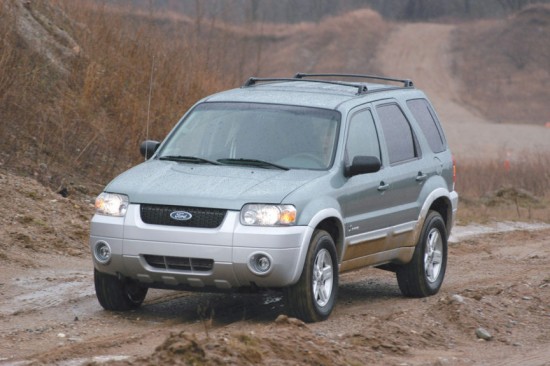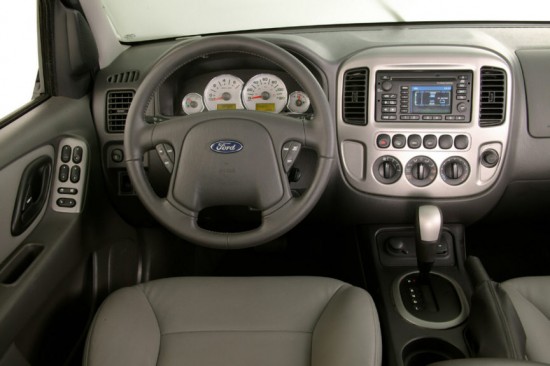2005 Ford Escape Hybrid
Starting this year, environmentalists will be a little more timid when they gripe about SUVs.
That’s because sport utility vehicles — long criticized for their gluttonous appetite for gas and dirty emissions — are turning green. Several manufacturers are planning more efficient models for the coming years, and the first to the market is Ford’s 2005 Escape Hybrid.
Just like the groundbreaking Toyota Prius and Honda Civic Hybrid cars, the Escape Hybrid uses a small, four-cylinder engine in conjunction with an electric motor to deliver great fuel economy, low emissions, and decent performance. It accelerates similar to the V6 Escape, but it gets about 35 miles per gallon in town compared to the V6’s 20 mpg.
Indeed, the differences between the hybrid Escape and its conventional counterpart are subtle. From the outside, the only way you can tell the hybrid apart from any other Escape is by looking for a few special badges and a small air vent, and even from the driver’s seat it’s easy to forget you’re driving a hybrid because it feels so similar to the regular SUV.
The biggest difference is the transmission. Whereas most Escapes have a run-of-the-mill automatic transmission, the hybrid version uses a continuously variable transmission that never shifts. It constantly adjusts to find the perfect combination of performance and economy.
How does the Escape Hybrid get such impressive gas mileage? Technology.
Like all hybrids, it uses big batteries and a powerful electric motor to supplement a relatively small gas-powered engine. The batteries recharge every time the vehicle brakes, so it never has to be plugged in.
In addition, the gas engine shuts down every time the vehicle stops to save more fuel and cut down on emissions. As soon as you lift your foot off the brake, it starts right back up.
The Escape’s hybrid system doesn’t feel quite as refined as either the Prius or Civic Hybrid. It’s difficult to tell when the engine starts and stops in both those cars because they run so smooth and have been engineered to start up so effortlessly. In the Escape Hybrid, though, the engine rumbles and shakes a little when it starts back up, making the start and stop of the engine quite obvious at each red light.
Other than having much better gas mileage and a different transmission, the hybrid Escape is virtually identical to the standard version. That means it has a comfortable interior, decent cargo capacity and a smooth ride, all factors that have made the Escape a hot seller since 2001.
The biggest disappointment is that the hybrid technology is not available on lower-end equipment packages. While a traditional Escape starts under $20,000, the hybrid model is $26,380 for front-wheel drive or $28,005 for all-wheel drive. Compared to the base Escape, that kind of a price premium quickly eats up any money you could save at the pump.
On the other hand, $6,380 is a small price to pay for feeling good about taking care of the environment.








